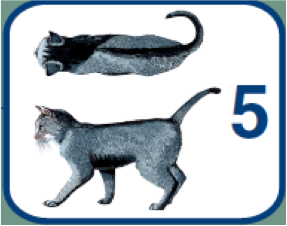Feed Spayed and Neutered Cats Right to Keep Them Slim
I just finished reviewing a large number of scientific papers that all try to explain why so many cats get fat after being spayed and neutered. While the research was conducted using various methods and often came to different specific conclusions (e.g., which hormones were most vital to the process), I was struck by the similarities in their “big picture” findings. Here are my three take home messages.
1. Decreased energy expenditure is NOT the biggest problem.
Taken to its most simple level, weight gain is all about energy imbalance. Specifically, when cats become overweight they are taking in more calories than they are burning and the excess is being stored as fat. This raises the question, “on what side of the calories in > calories out equation does the problem lie?”
Research is ambiguous on whether or not a cat’s energy needs decline after sterilization. Some studies support this assertion while others seem to show that spayed and neutered cats expend the same amount of energy after surgery as do intact individuals. After looking over all these papers, I’ve come to the conclusion that the primary problem is not with “calories out.” This is good news for most owners who don’t relish the idea of having to develop an exercise program for their cats.
2. Cats want to eat more after being spayed or neutered.
What is clear, on the other hand, is that left to their own devices many cats will take in more calories post spay/neuter than they did pre spay/neuter. The reasons behind this increase in appetite still aren’t totally understood, but the effect can be truly shocking. One paper found that after neutering, food intake in male cats increased by at least 50% and their body weight increased by 28-29%. Similar outcomes have been seen in females after spaying.
3. The solution lies with us.
It seems fairly clear that the biggest problem lies on the “calories in” side of our cats’ energy balance equation. We don’t know why cats want to eat so much after being spayed or neutered, but since this appears to be a fairly predictable outcome of the surgery, owners do need to compensate for it. If a cat gets fat after being spayed or neutered, the fault does not lie with them (they’re not being lazy), it lies with us.
The solution is straightforward. Cats cannot be allowed free access to food after being spayed or neutered. Instead, they should be offered several, measured meals throughout the day, and the size (caloric content) of those meals adjusted to maintain a slim body condition. We’ve gotten so used to being surrounded by fat cats that I think we’ve forgotten what a healthy one looks like. Here is a picture of the “ideal” body shape for cats taken from a popular body condition scoring system:

The accompanying description reads: observe waist behind ribs; ribs palpable with slight fat covering; abdominal fat pad minimal.
Weight gain after spaying or neutering is entirely preventable. Pay special attention to your cat’s diet and body condition for at least six months after surgery.

Dr. Jennifer Coates
Image: Valeri Potapova / Shutterstock
